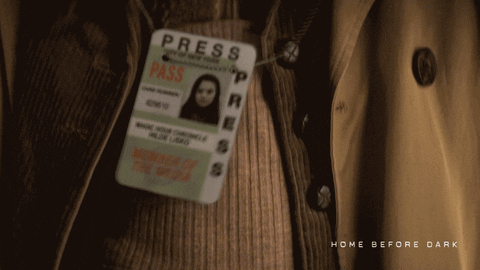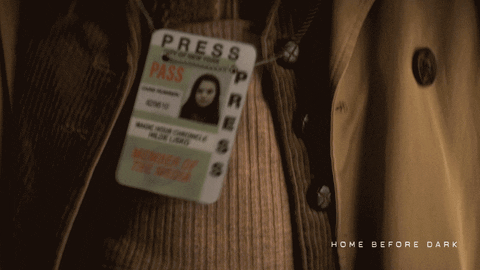Mehdeeka is for solo marketers or small teams working in the B2B, SaaS, startup, and tech spaces. Check out the previous issue: Lessons from Disney’s CEO. Help me grow Mehdeeka by sharing it with a friend or colleague!
And thank you for answering the poll from last week! 5 questions for interviews won so I won’t be shying away from slightly longer interviews going forward.
I’m going to consider this Q2 of Mehdeeka, which inevitably means time to introduce something new! For the next three issues (starting with this one), I’m going to cover a single topic from three distinct perspectives. After that I’ll do deep dives into one topic without interviews, and present research + my own experience.
We’re starting with the mystery that is PR, and covering it from 1. the perspective of a tech journo, 2. the perspective of a tech PR, and 3. the perspective of a marketing/media journo!
Part 1 starts with a dear friend, Gina Baldassarre, who wrote for Startup Daily for four years, covering a huge swathe of the Australian startup landscape. If it’s B2B, SaaS, or tech, Gina has covered it.
Gina is currently the Content and Communications Manager at Qantas Super and also runs her own substack, Good Chat which I have linked out to a few times before!
Kayla: If you were reading a pitch, what would you ask yourself before deciding whether or not to accept it and run a story?
Gina: There are a couple of different things for me:
Is it about an interesting new type of product or company that we haven’t covered before?
If the answer to the first question is no, then does this company have a cool new spin or take on the problem they’re trying to solve that they think their competitors haven’t figured out?
Is there some kind of human interest angle to the founder or company, or do they look different to the stereotypical view of a founder? During my time at Startup Daily, I was really conscious of both upping the number of women featured in our coverage, and ensuring that we didn’t just cover startups based in the major cities, so I would say yes to a lot of pitches about women or regional founders .
Are there good numbers involved? I hate to say it, but funding announcements really did alway get clicks, so raises always caught my eye, but there are so many other numbers that make for good stories, like achieving x number of customers/users or app downloads in y days or months.
K: What sets tech journalism apart from other types of coverage?
G: I think it’s the fact that you could be covering a first-time founder who’s going to go on to be the next Mike or Scott. I haven’t had one of those yet, but over my four years at Startup Daily, I really enjoyed following the development of lots of startups I’d covered early on. We were often the very first bit of press for local startups, so it was cool to watch them go on to get coverage in global publications down the line.
That you’re covering people and companies that could go on to do good stuff that changes the world is also really cool!
K: What do you think are common mistakes startup/tech companies make when it comes to pitching journalists?
G: I think one of the biggest mistakes is making claims that you can’t substantiate, or answer follow-up questions about.
For example, I had so many founders tell me they were launching a world-first product. Like, the odds are at this point that you’re just not, but I had so many startups telling me that they were, and that they had no competitors.
I actually had a really good memory for what we’d covered over my four years at Startup Daily, and got quite good at reading pitches and being thinking, oh yeah, I get what they’re doing, that’s what that other startup I wrote about back in 2016 was doing. And even if I hadn’t written about the other startup, I’d probably received an email about it (I didn’t respond to every email, but I did read them all, I promise!).
When I’d then ask a founder how they thought they could differentiate themselves from that other startup or, if the other startup had shut down, how they would avoid the same fate, most were adamant that, actually, they were extremely different and not really competitors at all - even though the products or services they offered were almost identical (like, do you know how many ‘order food from home cooks’ and ‘park your car in someone else’s driveway’ marketplaces I saw in my time?!).
First of all, it’s just silly, but secondly, I think it points to a bigger issue, which is that you’re not prepared to answer questions about your business. A good journo isn’t just going to run your release - they’re going to ask you questions! Other common questions founders liked to avoid were those about how many customers or users they actually had, even if the question came as a follow up to them making some sort of claim about how they had loads of customers.
If you can’t answer what are actually pretty basic questions and back up what you’re saying, that’s concerning. And forget about journos - any investors you pitch are going to ask you the exact same thing!
K: What small changes would make a press release more appealing to you?
There are so many small things you can do to show you’ve tailored your pitch to a specific publication - getting the publication’s name right is a good start! You’d be surprised how many emails I got from people telling me they had a story that was a great fit for Startup Smart, our biggest competitor.
For our publication, having a good picture of yourself and/or your team ready to go, or not making a big deal of having to take one when I asked, was also a big one. If you took one look at the site, you’d see that I liked to feature images of founders or teams on articles, so giving me a screenshot of your app or website was useless (save that for another publication which I’m sure will find them useful!). If they didn’t have any ready to go, I would always tell founders that all they needed was a smartphone and a nice wall, so if they told me it would take a few days to get it back to me, that would irk me.
Beyond that, show how your story is actually a good fit for the publication by pitching me and talking about the angle relevant to me. There are so many different angles you can take with any story, so make sure you’re pitching a publication the angle that’s right for them! For example, I liked to cover the launch of new startups by exploring where the idea for the company came from and what the journey of bringing it to life was like for the founder and their team - the intricate details of the tech behind their app or platform? Yeah, that wasn’t for me, but it’s definitely a good story for another publication!
K: Where do you think the best tech coverage is coming from? What publications do you frequent?
G: I still can’t go past TechCrunch, but I also really enjoy Pando and everything Taylor Lorenz writes for the New York Times.
Right click, open in new tab
Everyone loves a good rant about being asked to work for free or far less than we’re worth… here’s a poem about it.
It’s Nice That (which I frequent regularly for visual inspiration) launched Extra Nice, a paid subscription with extra features that are pretty tantalising if you’re into design. And while we’re on the topic, here’s some art I found to be ~inspiring~ when I was on the website.
If you’re in need of a colour palette, I recommend Coolors for generating complementary colours.
And some B2B news - the top “breakthrough” B2B brand (apparently defined as “rising companies” with a brand focused approach to growth) is Atlassian.
Afterpay is the top B2C brand, but it all just reminds me of Atlassian and Canva (also in the list) winning all the awards at the startup conferences. Because they so badly need them.
Coming up next week
Drum roll please because my next guest literally just won a national award for best tech PR, as voted for by tech journalists!!! None other than Harrison Polites himself will be giving his advice on PR from an internal perspective, including how to know when you’ve got a story and when you don’t!





